



Be sure you know what to do in an emergency, for example if the area
you are in has to be evacuated, or if someone has an accident
As you move around the area that you are in, don't pass by an unsafe situation without comment, otherwise you are condoning what is going on – show your concern. Remember, if you are concerned with an unsafe condition, particularly in the area that you are, then report it. If you don't, someone may be injured. You should know where the nearest first-aid kit is and who the trained first-aiders are, as well as the emergency telephone numbers to use. If an accident occurs and help is needed, send for it immediately. If an ambulance is required, arrange for it to be directed to the scene of the accident without delay. Remember, if you have an accident at work, no matter how minor it is, you must report it to your supervisor. If you don't report it, steps cannot be taken to stop a similar accident happening again. You should also know the an emergency fire plan for the area where your are, and where the fire assembly point is. The plan makes sure that everyone on site reaches safety if there is a fire. If you do not know the plan, or don't understand something about it, ask for it to be explained to you. Check where the emergency exits are from where you are and that they are kept clear. If you are working in, or near to, an emergency exit; do not block it. This is important, as people can easily become trapped, especially where they are above, or below, ground level. Fire can grow extremely rapidly and delay in reacting to it can be fatal. Not only can people be killed or injured, but fire can also be financially devastating to those involved.There must be effective arrangements to deal with serious and
imminent danger
The Management of Health and Safety Regulations requires that you to consider and to put into place arrangements to be followed in event of serious and imminent danger to persons in your premises Such an emergency may be due to: • Injured person • Fire • Gas escapes • Water leaks • Chemical spillages • Warning threat • Explosion • Vehicle impact The extent of the potential threat will dictate the amount of detail and consideration that is needed to deal with the emergency. For example, a small ground floor space will generally only require a simple plan, whereas a production facility that employs many people and may contain hazardous products will need a detailed comprehensive plan. Contact the appropriate emergency services, when preparing your emergency plan, and discuss it with them. Ask for their advice and follow the guidance that they give you. When your plan is complete, make sure that you tell all of your employees, and other in your premises, about it. Arrange for any special training or instruction that may be required. Carry out a ‘test run’ to make sure that your plan will work should it be needed in real life.The following must be reported to the Health and Safety Executive
(HSE)
Cases of death or major injury, must be notify without delay - this is most easily done by reporting it online. Alternatively, it can be done by calling the Incident Contact Centre on 0345 300 9923 (opening hours Monday to Friday 8.30 am to 5 pm). Cases of over-seven day injuries must be notified within fifteen days of the incident, using the appropriate online form. Cases of disease should be reported as soon as a doctor notifies that a person is suffering from a reportable work-related disease, using the online form.Make sure you there is a first aid kit available and everyone knows
where it is
If an accident occurs and you need help, send for it immediately. If an ambulance is needed, arrange for it to be directed to the scene of the accident without delay. While administering first aid, use protective clothing and equipment where it is necessary. Anyone who is injured must obtain treatment for their injuries when they happen and must see that details of these are entered in the Accident Book at the time.Make sure that you know the first aid arrangements
where you are.
• The law requires some types of accident or incident to be reported to the Health and Safety Executive. • Where the injury is serious it must be reported immediately.First Aid Priorities
• assess the situation; • do not put yourself in danger; • make the area safe; • assess all casualties and attend first to any unconscious casualties; • send for help, do not delay; • follow the advice given below - • apply direct pressure to the wound; • raise and support the injured part (unless broken); • apply a dressing and bandage firmly in place.- • If a broken bone or spinal injury is suspected, obtain expert help. • Do not move casualties unless they are in immediate danger • Burns can be serious so if in doubt, seek medical help. Cool the part of the body affected with cold water until pain is relieved. Thorough cooling may take 10 minutes or more, but this must not delay taking the casualty to hospital. Certain chemicals may seriously irritate or damage the skin. Avoid contaminating yourself with the chemical. Treat in the same way as for other burns. Continue treatment even on the way to hospital, if necessary. • Remove any contaminated clothing, which is not stuck to the skin. • All eye injuries are potentially serious. If there is something in the eye, wash out the eye with clean water or sterile fluid from a sealed container, to remove loose material. Do not attempt to remove anything that is embedded in the eye. • If chemicals are involved, flush the eye with water or sterile fluid for at least 10-15 minutes, while gently holding the eyelids open. Ask the casualty to hold a pad over the injured eye and send to hospitalEmployers must make sure that all injuries, regardless of how minor
they may appear, are recorded in an accident book
This is in addition to the requirements under the Reporting of Injuries, Diseases and Dangerous Occurrences Regulations (RIDDOR), to report incidents. It is good practice to record in the accident book any incidents involving injuries or illness, which have occurred at work, and not just those reported under RIDDOR; as this is a valuable part of any business's management of health and safety. Various publishers produce accident books that have removable forms in them, so that any individual recording an accident is unable to read details of the previous records; so as to comply with data protection legislation. Most of the accident books also contain some basic first aid guidance, as well as information about employers’ duties under RIDDOR, and should be kept at a central location on the premises. All companies with ten or more employees are legally required to keep an accident book under the Social Security (Claims and Payments) Regulations 1979. Previous legislation, which requires certain other companies to keep an accident book, remains in force. All accidents in the workplace must be recorded in the book and records must be kept for a minimum of three years after the last recorded entry. Consideration should be given to developing and implementing a suitable internal accident reporting and recording process; as this can help identify accident trends and possible areas for improvement in the control of health and safety risks.The following major injuries must be reported online to the HSE
• fracture other than to fingers, thumbs or toes; • amputation; • dislocation of the shoulder, hip, knee or spine; • loss of sight (whether it is temporary or permanent); • chemical, hot metal burn or a penetrating injury to the eye; • injury or incident that leads to unconsciousness, or which requires resuscitation; • injury or incident that leads to hypothermia or to a heat induced illness; • injury or incident that leads to hospital admittance for more than 24 hours; • acute illness requiring medical treatment that is caused by contact with harmful substances.Additionally, the following must be reported online within 15 days of becoming apparent:
• an injury, which is not a major injury, but which results in someone not being able to work for seven consecutive days as the result of an occupational accident or injury (not counting the day of the accident but including weekends and rest days); • a work-related illness or disease when a written diagnosis is received from a doctor, that the person is suffering from one or more prescribed conditions, and has been doing the prescribed work activities.Dangerous occurrences are near-miss events must also be reported to
the HSE; however, not every near-miss event must be reported
Here is a list of some of the common events that are reportable to HSE online: • collapse or partial collapse of a scaffold over five metres high, or erected near water where there could be a risk of drowning after a fall; • collapse, overturning or failure of load-bearing parts of lifts and lifting equipment; • electrical short circuit or overload causing fire or explosion; • plant or equipment coming into contact with overhead power lines. • dangerous occurrence at a pipeline; • explosion, collapse or bursting of any closed vessel or associated pipe work; • unintentional explosion, misfire, failure of demolition to cause the intended collapse, projection of material beyond a site boundary, injury caused by an explosion. • dangerous substance being conveyed by road is involved in a fire or released; • road tanker carrying a dangerous substance overturns, suffers serious damage, catches fire or the substance is released; • failure of any freight container in any of its load-bearing parts; • accidental release of a biological agent likely to cause severe human illness; • dangerous occurrence at a well (other than a water well). There is also a requirement to notify a range of other serious events associated with fairground equipment, the collision of a train with any vehicle, the failure or endangering of diving equipment or the endangerment to a diver, and the failure of industrial radiography or irradiation equipment.Fire can cause greater loss than any other reason
Modern buildings contain multiple fire risks, so it is important to make sure that all the potential fire risks have been covered as a fire can grow extremely rapidly, and delay in reacting to it can be fatal. You must therefore, regard fire prevention and detection an important duty. Look out for potential fire hazards; extinguishers that have been tampered with, are part empty or empty, or which are overdue for a service check. If there is any construction or refurbishment work being undertaken in or on the premises be aware that some work activities such as welding, grinding and roofing are a serious cause of fires. For this reason, ensure that all combustible materials are removed from the area where a naked flame is to be used, or where grinding work is taking place; and that at least one fire extinguisher (water or dry powder) at kept at hand in the work area. After the work is completed, check the work and surrounding areas, to ensure that there are no smouldering materials. Or better still, use a hand-held thermal imaging device to do this.Make sure that everyone knows the emergency procedures for your location, and that you
know where the nearest fire fighting equipment is kept, as well as where the fire assembly
point is.
If you discover a fire or if you hear or see an alarm • Do not attempt to tackle the fire • Raise the alarm by the quickest practicable means • Immediately leave by the nearest fire exit, shutting doors behind you - do not attempt to collect personal belongings • Go to the evacuation assembly point and await instructions • Do not re-enter the building until an authorised person tells you it is safe to do so On calling the Fire Brigade tell them the nature and extent of the fire, the address where the fire is, and which site entrance they should go to. Note the time the Fire Brigade were called and their time of arrival. Meet the fire tender at the entrance to the site so that they gain immediate access, and then lead them to the fire. Give the Fire Brigade as much assistance as you can, while recognising their absolute authority to deal with the fire.Fire extinguishers
Modern fire extinguishers are coloured red, or may have a self coloured metal body, with a different coloured panel or band on the body. The colours show which type of fire the extinguisher is most suitable for. Colour Type Used for Works byGas has the potential for causing serious damage by explosion or fire
If you are working in a kitchen area that uses gas, you should be trained in the action to take if a leak occurs and must know the location of the local gas shut-off valve.Action to be taken if a gas leak is suspected:
• Turn off the meter/emergency control valve straight-away and leave it off until the escape has been repaired • Tell everyone in the immediate area to extinguish all flames and to put out anything that could ignite the gas • Do not use mobile phones or operate any electrical switches - most make a tiny spark • Ventilate the premises by opening doors and windows • If a lot of gas has escaped; immediately inform others that may be in the building and evacuate the area by following the emergency arrangements • Contact the National Gas Emergency Service 24 hours a day on 0800 111 999On calling the Gas Emergency Service tell them:
• The name, address and telephone number of the premises • Where the smell of gas is most noticeable • When the smell of gas was first noticed • Whether the gas has been turned off • If there is any smell of gas outside • Any special instructions for accessAll chemical spillages have the potential to become major incidents
• Speed in following the correct action can prevent a minor spill becoming an incident that might endanger personnel and/or the environment. When dealing with a spillage, always: • Assess the situation • Raise the alarm by shouting loudly for help • Assess the risks to personal and the environment - evacuate if necessary • Apply the correct P.P.E to deal with the incident • Contain the spillage; and, if possible, stop the leak at its source.For a small spillage
• Use spill granules to absorb the spillage, try to absorb as much of chemical as possible • Sweep up into a suitable container for disposalFor a large spillage
• Try to contain the spillage • Divert the spillage away from drains, watercourses, and public areas • If necessary, use spill granules to absorb the remainder of the spillage, try to absorb as much of chemical as possible • Sweep up into suitable containers for disposalMajor damage and disruption of work can be caused by burst water
pipes, leaking mains, or taps not turned off
You must use your initiative to minimise the possible damage - as a guide:
• where the consequence of closing a valve or tap is unclear, or where there is complex machinery, steam boilers or other plant involved, you must contact the building maintenance engineers for guidance; • where it is clear that your action will prevent further damage, you should proceed to turn off valves, etc.; • open sink taps that are on the leaking service to drain the water from the pipes to stop the water leaking further. • Remember turn off the electrical supply if the water is likely to come into contact with the electric wiring.It is important to treat all targeted warning threats seriously
Typically such threats are made by telephone, but may be received online, by a text message, or verbally. They usually involve a warning that your building, or any other building, is at risk; so it is important that you try to obtain as much information as possible. The risk may be arson or other physical damage, an explosive or fire bomb, or a terrorist or similar attack. All must be dealt with promptly and without causing unnecessary alarm.If you receive such a warning call:
• remain calm • keep the caller speaking for as long as possible, to extract as much information as you can • ask the following questions: o what is the treat? - if it is a bomb - when will it go off? - what does it look like? o why are you doing this? - who are you? If the threat is made by telephone, then try to obtain information about the caller, for example - their sex, accent or speech mannerisms, also listen out for background noises. When the call has finished, immediately inform the Police by calling 999, move everyone in the area away from the potential danger and arrange for the building to be evacuated.In the rare event of a weapons or firearms attack :
• RUN - to a place of safety - if there’s nowhere to go, then … • HIDE - remember to turn your phone to silent and turn off vibrate - barricade yourself in if you can - then finally and only when it is safe to do so … • TELL - the police by calling 999.The impact of a vehicle striking a property can be devastating and can
often lead to loss of possessions and can leave the property structurally
compromised
Vehicles are designed for a collision; walls and buildings are not. Take action to reduce the likelihood of this happening and to reduce the severity of the damage if it does occur, by following these steps: • Plan to provide a clear space or “stand-off distance” where no vehicles are permitted in front of the building. Every inch counts, so make this as far from the building as you can, and put a suitable barrier there. • Use large heavy planters, boulders, earth mounds, or other architectural features, that actually enhance the appearance of the building, while offering a layer of protection; • If necessary, install fixed or retractable steel posts or bollards, that are tall enough for drivers to see; • Orient parking spaces at 45 O so that they are pointing away from people and the building. Don’t rely on curbs for protection, as they are not effective barriers for moving vehicles. Once the wheels roll up over the edge, there’s nothing to impede the vehicle’s momentum.In the event of a vehicle impact:
• Do not put yourself in danger; • Do not allow anyone in to the damaged area for any reason; • Assess the situation - take a look at the damage which could be minor, depending on the speed of the impact, or it could be more severe and require a structural inspection; • Do not touch power lines or wiring; • Gas utilities may be damaged and extremely dangerous; • If anyone has been injured call the police, and an ambulance too if necessary, as soon as possible; • If the driver leaves the scene, call the police straight away, or if the vehicle is blocking the road; • Turn off any electrical or gas supplies if these were damaged, and contact the utility suppliers so that they can deal with the situation; • Take photographs of the scene for use as evidence, and make a note the vehicle’s colour, make and model; as well as the time and date of the incident; • Make the area safe and secure – but do not attempt to move the vehicle as the building may be unstable. Tell the police if you leave the property before it is secure; • If there is structural damage to the building, block of the area containing the damage to prevent any pedestrian traffic, and to secure it to prevent theft; • Contact your insurance company as soon as possible; • Even if there are no personal injuries, the police must be notified of the incident within 24 hours.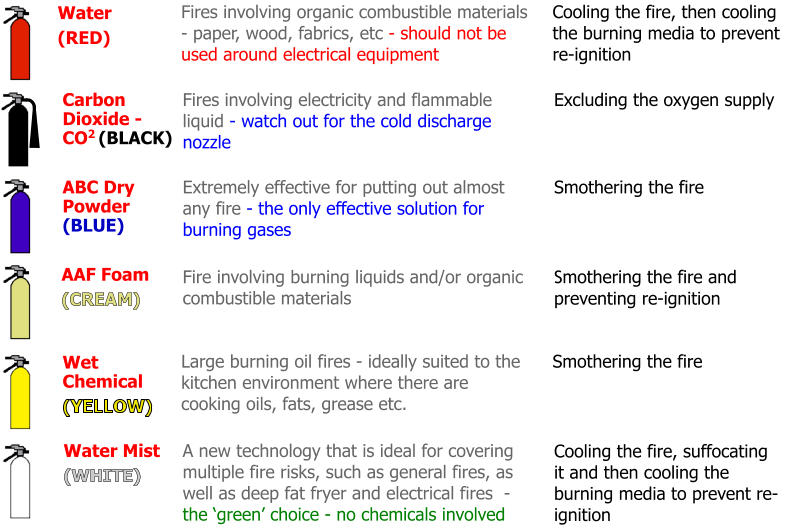


Online reporting
Complete the appropriate online report form at
http://www.hse.gov.uk/riddor/report.htm#online
The following reports are available:
•
an injury
•
a dangerous occurrence
•
an injury offshore
•
a dangerous occurrence offshore
•
a case of disease
•
flammable gas incident
•
a dangerous gas fitting
The form will be submitted directly to the
RIDDOR database, and a copy will be returned to
the sender for their records. There are a series of
frequently asked questions available on the HSE
website to help to complete the online format -
http://www.hse.gov.uk/riddor/faqs.htm
Reporting out of normal hours
The type of circumstances where HSE may
need to respond out of hours are:
•
following a work-related death;
•
following a serious incident where there
have been multiple casualties;
•
following an incident which has caused
major disruption such as evacuation of
people, closure of roads, large numbers
of people going to hospital, etc.
If the incident fits these descriptions ring the
duty officer on 0151 922 9235.

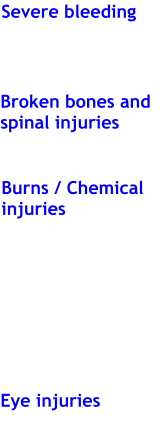






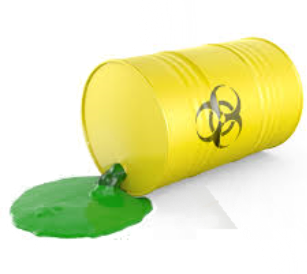




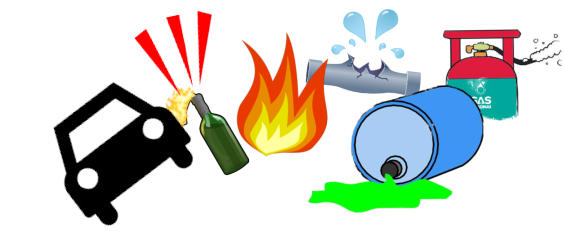



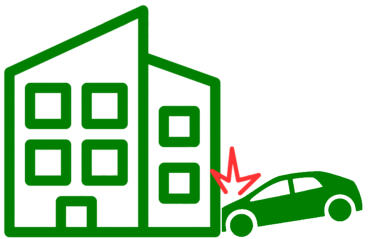

Emergency
situations













































